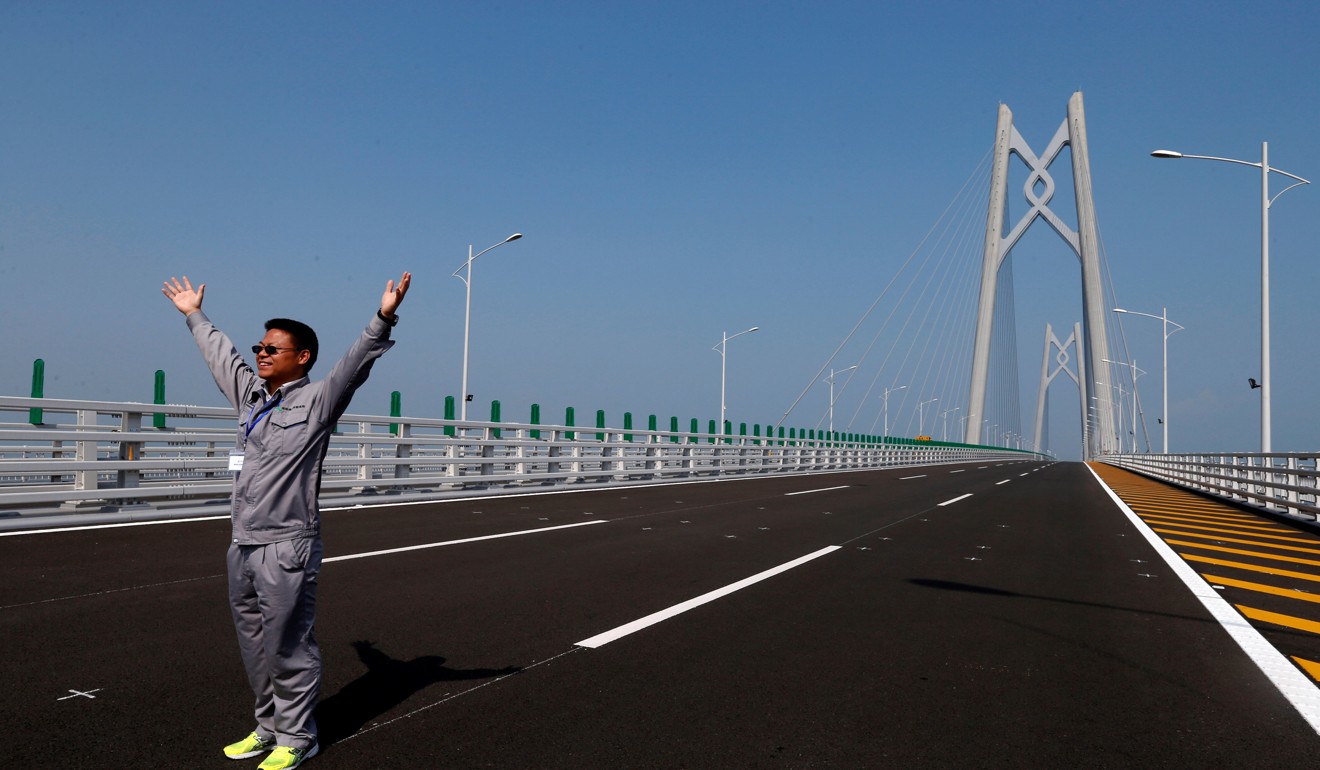
Hong Kong contractor used metal cylinders instead of bricks in faked concrete tests for cross-border bridge
Jacobs China Limited employee pleads guilty in conspiracy to defraud case linked to building of multibillion-dollar Hong Kong-Zhuhai-Macau bridge
Technicians at a Hong Kong government contractor faked reports on the strength of concrete bricks used in a major cross-border bridge project because they were pressed for time and faced a manpower shortage, a court heard on Friday.
Ng Kai-yiu, 64, a Jacobs China Limited employee, pleaded guilty at District Court to a charge of conspiracy to defraud in a case connected to the multibillion-dollar construction of the Hong Kong-Zhuhai-Macau bridge.
A total of 19 people have been charged as a result of the scandal, which came to light last year.

The court was told that Ng’s superior, Mak Pui-shing, who is a co-defendant, would tell him to “get things done” and “make things right” every time he, and others, missed deadlines.
On those occasions, Ng, and others tasked with testing the strengths of the cubes, would either adjust the time and dates on a machine he used, or replace the brick with a metal cylinder to get a qualifying result, the court heard.
District Court Judge Clement Lee Hing-nin adjourned sentencing to January 8 next year, after hearing mitigation that Ng would offer help on the prosecutions of the other defendants, for the trial which is set to begin at the start of next year.
First traffic to cross Hong Kong-Zhuhai-Macau bridge in 2018, according to Chief Secretary Matthew Cheung
The 55km crossing, which is a combination of bridges and a tunnel, has been under construction since 2011 and will link three major cities in the Pearl River Delta – Zhuhai in mainland China, and the two special administrative regions of Hong Kong and Macau.
On Friday, the court heard how Hong Kong’s Civil Engineering and Development Department set up a laboratory to conduct various compliance tests on concrete cubes, soil, rock and steel bars for the project, with the work undertaken by the Highways Department.
The management and operation work was outsourced to Jacobs China Limited, where Ng was tasked with conducting compression tests on the concrete bricks, and reported the results to Mak, a senior laboratory technician.
“Since 2013, as the workload was heavy at the site, as well as their being a manpower shortage, some laboratory technicians were unable to conduct the times within a certain time window,” prosecutor Lisa Remedios said.
This led to certifications not being granted for the bricks.
Every time Mak noticed a deadline had been missed, Remedios said “he would tell the laboratory technicians in charge to get things done”. He would also order Ng to “make things right”.
Hong Kong-Zhuhai-Macau bridge can shorten travel times and extend opportunities
The prosecutors said Ng deliberately colluded with others to deceive staff at the government.
In mitigation, his counsel Foster Yim said the married father of two had been cooperating with the investigation.
He also said unlike other fraud cases, Ng did not actually gain monetarily, though he conceded it had helped him keep his job.
Apart from this scandal, the multibillion-dollar bridge has been fraught with controversies, plagued by industrial accidents and a budget that keeps increasing.
Recently, it was in the spotlight after photographs showed a part of a protective wall had purportedly drifted away for its base.

